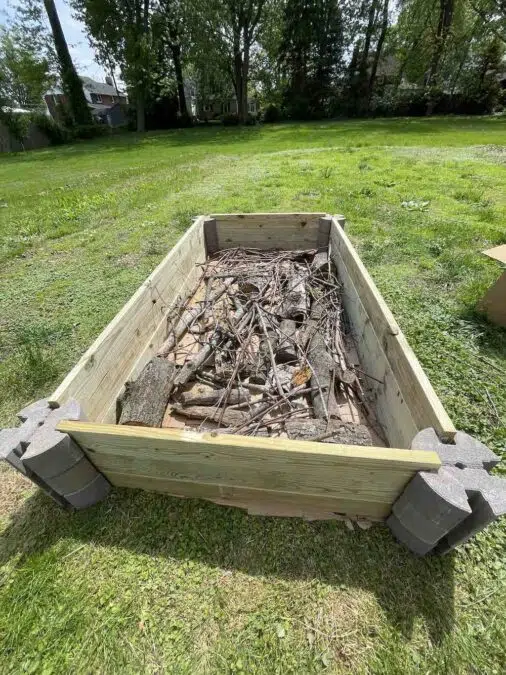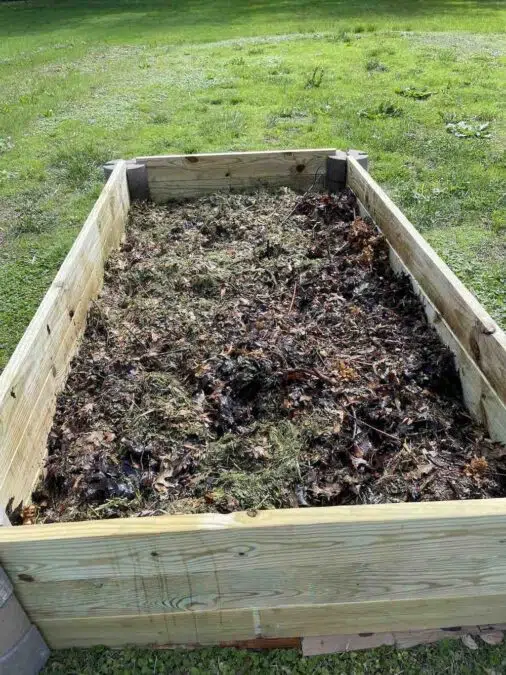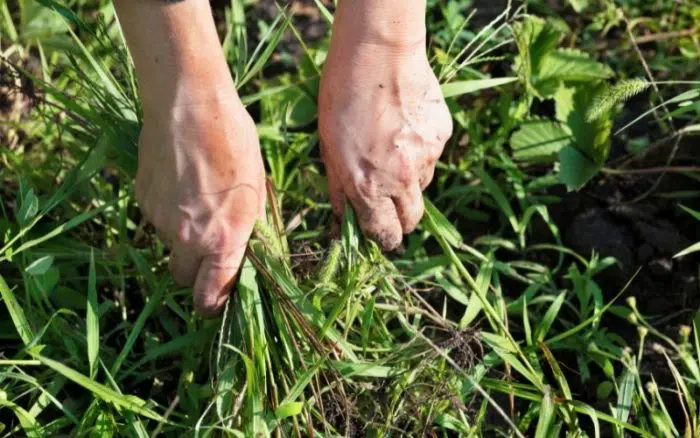Raised beds are a great way to grow food if you have poor garden soil nutrients or want a more accessible way to access your garden.
Raised garden beds take a lot of planning, including the location, the size, the materials, etc., and often end up making you wonder what to put on the bottom of a raised garden bed.
Do you even need a raised garden bed bottom?
What Do I Put on the Bottom of a Raised Garden Bed Before the Soil?
In short, you don’t need a bottom for your raised garden bed and you can just place it right on top of your lawn. However, adding certain materials like hardware cloth, straw, grass clippings, compost, and organic matter can improve the harvest you can expect from your raised garden bed.
With raised bed gardening, a big concern might be about keeping weeds and pests out, you also want to consider that by adding an impenetrable bottom, you will be keeping out the GOOD things as well. This includes worms, worm castings, nutrients from the garden soil, and other beneficial microorganisms.
If you’re adding a more permeable bottom surface, like newspaper or something that will break down eventually, then
7 Ideas for the Bottom of Your Raised Beds
If you really feel compelled to put a bottom layer under your raised bed, there are a few materials that will help prevent weeds and other issues you might run into.
Some good options for raised bed bottoms:
1. Wood, Sticks, Branches
Since vegetables generally grow roots down about 18 inches, if you have tall raised beds, you can use a concept from Hugelkultur and put wood at the bottom. This can reduce the cost of filling your raised beds since you only need the higher quality soil at the top third or half of your raised bed garden.
I added wood to the bottom of my raised bed to take up space and reduce the amount of soil I need to fill my bed.

2. Straw
Remember, use straw NOT hay as this can introduce seeds and create a bigger weed problem than you already have.
3. Compost
Compost is like gold when it comes to gardening. Adding compost below your elevated garden bed will help keep the soil nutrient-rich, and encourage roots to grow deeper as they encounter those nutrients.
4. Grass Clippings
Grass clippings can act as a fertilizer, providing NPK (nitrogen, potassium, and phosphorus) at a 4-2-1 ratio. As they break down, grass clippings will also feed the good bacteria in the soil.

5. Leaves or Leaf Mold
Leaf mold is a nutrient-dense option you can add to the bottom of your raised bed. Similar to compost, it provides the soil with nutrients and allows for the movement of plant roots and worms.
6. Newspaper
Newspaper is a common choice for gardeners who want to add a bottom to their raised bed. It breaks down quickly, so there are few concerns about it impacting the nutrients in the soil, but this also means it’s not great for keeping weeds out of your garden either.
7. Hardware Cloth
Hardware cloth is one of the options that can be good to add to your raised bed if you live in an area with lots of mole and vole activity. While it does have holes, they are small enough that critters and pests cannot get through them.
The holes allow the nutrients to penetrate the soil and allow worms to move about. The roots of your plants can also penetrate this, allowing them to grow deep and strong.
This option will not do anything for weeds, but as I mentioned before, weeds are almost a right of passage as a gardener.
The Advantages to Having a Bottom to Your Raised Bed
There are a lot of reasons people like putting something under their raised beds. But sometimes the cons outweigh the pros, so let’s dive into those.
Keeping Out Weeds
Weeds are one of the main arguments I see for people wanting to put something under their raised garden beds. Sure, weeds can definitely make their way to the top of the bed, especially if they are shallow enough.
While they can be annoying, weeds are kind of something you have to deal with as a gardener.

What you can use to keep weeds out of your raised beds:
- Landscape Fabric
- Cardboard
- Stones or river rocks
Critters and Pests
Voles, moles, gophers, and more can easily get underneath a raised bed and wreak havoc on your plant’s root systems. You probably won’t even realize it’s happening until it’s too late.
What people use to keep pests out:
- Gopher screen
- Galvanized hardware fabric
- Stones and river rocks
- Concrete
Aesthetics & Placement
If your raised bed is placed on top of concrete, a flat roof, or a wooden patio, then having a bottom to your raised bed might make sense. Otherwise, the garden soil will stain the ground and require some extra deep cleaning or replacement if you do move or get rid of these beds.
The Downsides to Having a Bottom to Your Raised Bed
The downside to having some of these barriers in place is that you’re also keeping the good things out of your bed.
While you may keep out pests and weeds, you’re also keeping out the good stuff too.
Worms, nutrients, etc. aren’t able to get through these barriers. Worm castings are very nutrient-rich and great for any garden, so removing them altogether isn’t a good thing.
One of the big benefits to having raised beds is that the nutrient-rich garden soil you add to them will help amend the topsoil underneath. Landscape fabric and other barriers keep these nutrients from penetrating your topsoil and removes that benefit altogether.
Do the Pros Outweigh the Cons?
So, the question of whether or not to add a bottom to your raised bed comes down to deciding if the pros outweigh the cons.
In my opinion, I don’t think they do. In fact, the cons actually outweigh the pros. Unless, you’re using something like hardware cloth or another permeable material under your raised bed soil.
No matter which you choose, these choices remove the negative impact of not allowing nutrients and worms to get through. While newspapers will prevent those things up front, it does break down pretty quickly so eventually, they will be able to penetrate that layer.



I was wondering about using 4″ of clean gravels at the bottom as well as the gopher wire and introducing 3-4 dozen earthworms to start a colony of worms to help with leaving castings, etc.